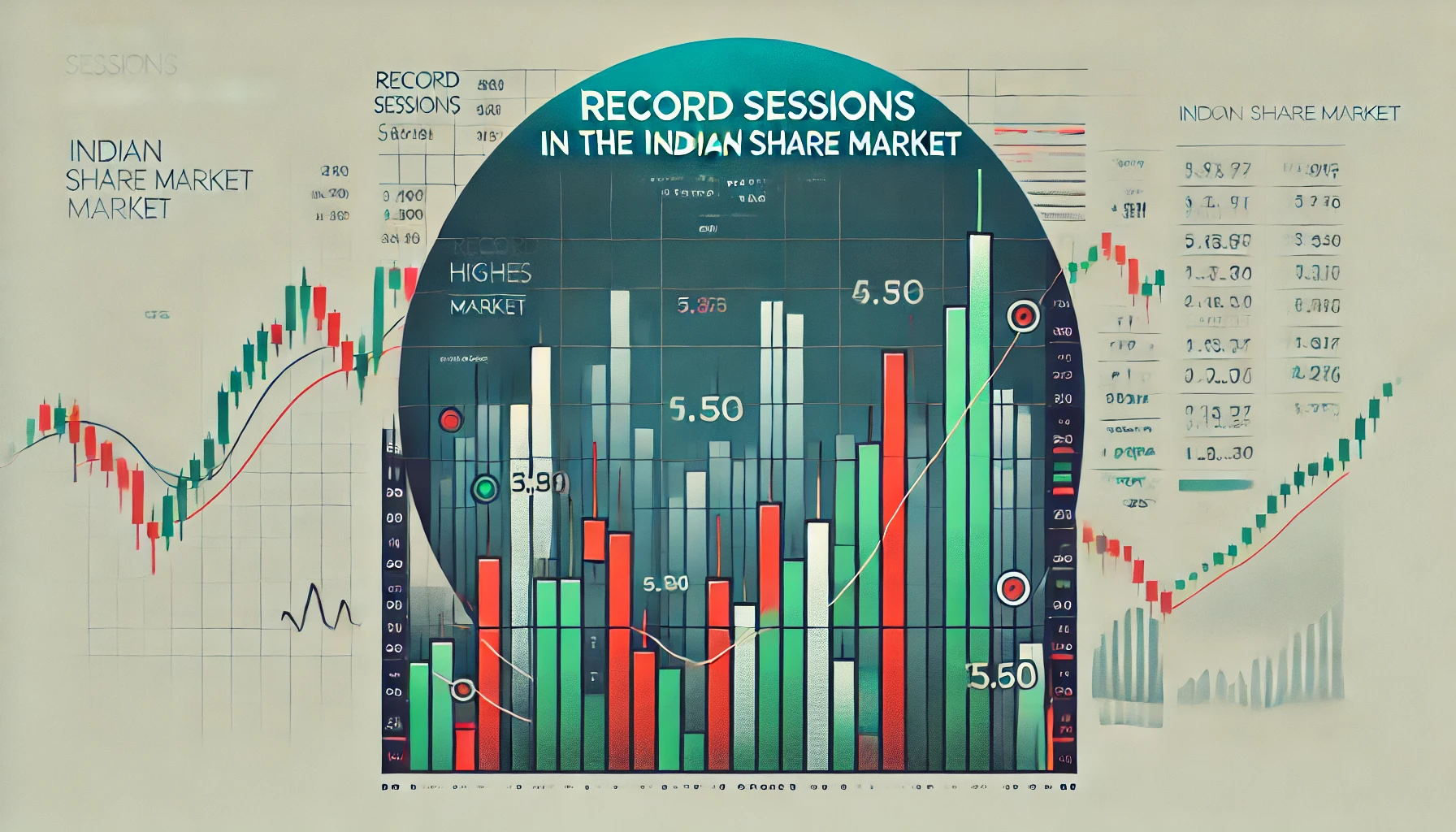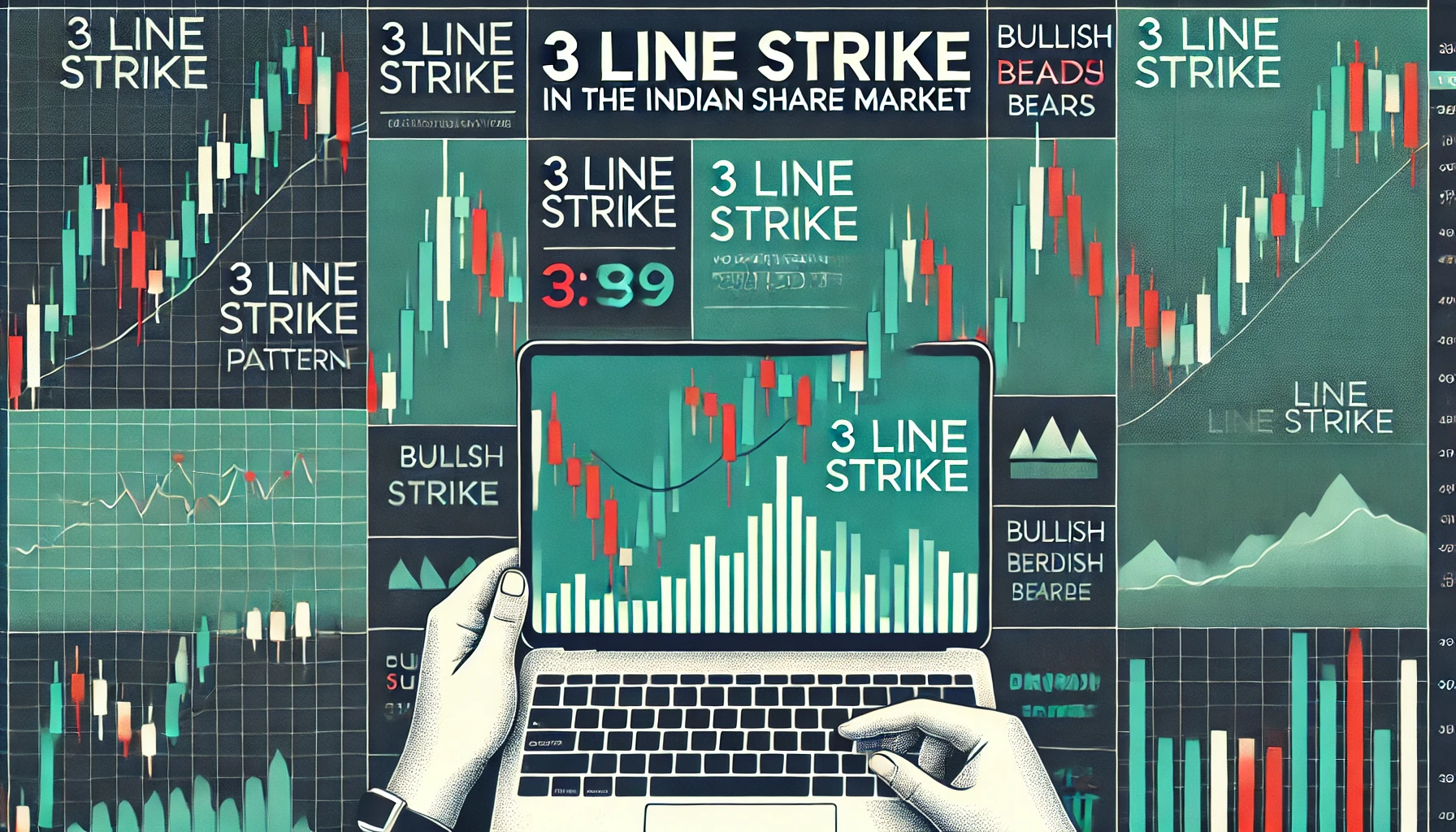Technical analysis tools are invaluable for traders in the Indian share market. Among them, Percentage Envelopes offer a practical and effective method to analyze price trends and volatility. In this blog, we will delve deep into the mechanics of Percentage Envelopes, how they can be applied to the Indian stock market, and provide historical data to demonstrate their usefulness.
What Are Percentage Envelopes?
Percentage Envelopes are technical analysis indicators that create two lines above and below a moving average. These lines form an “envelope” around the price movement. The bands or envelopes are a fixed percentage away from the moving average, with the upper band representing prices that are overbought and the lower band indicating oversold conditions.
Components of Percentage Envelopes:
- Upper Envelope: A percentage above the moving average.
- Lower Envelope: A percentage below the moving average.
- Moving Average: Typically, a simple or exponential moving average (SMA or EMA) is used, which smoothens out price fluctuations.
Percentage Envelopes are effective in identifying potential reversals, breakouts, and the overall direction of market trends.
Application of Percentage Envelopes in the Indian Stock Market
In the Indian stock market, Percentage Envelopes can be applied to various indices like the Nifty 50 or Sensex, as well as individual stocks. By setting a specific percentage for the envelopes, traders can detect overbought and oversold signals, helping them decide when to enter or exit trades.
Practical Example: Nifty 50 with 5% Envelope
Let’s take a look at a historical example of the Nifty 50 with a 5% envelope. This means that the upper and lower bands are set 5% away from the moving average.
Table: Nifty 50 Percentage Envelope (5%) – Historical Data
| Date | Nifty 50 Value | 20-Day MA | Upper Envelope (5%) | Lower Envelope (5%) | Signal |
|---|---|---|---|---|---|
| 01-Jan-2022 | 17250 | 17000 | 17850 | 16150 | Neutral |
| 15-Feb-2022 | 17500 | 17200 | 18060 | 16340 | Approaching Upper Band |
| 01-Apr-2022 | 16700 | 17050 | 17802 | 16298 | Below Lower Band |
| 01-Jun-2022 | 16000 | 16500 | 17325 | 15675 | Oversold |
| 15-Jul-2022 | 16500 | 16200 | 17010 | 15390 | Reversal |
This table shows the relationship between the price of the Nifty 50 and the upper and lower bands of the 5% envelope. When the price touches or moves beyond the bands, it signals a potential reversal or breakout.
Historical Data and Analysis: Sensex and Percentage Envelopes
Using the Sensex, we can also apply Percentage Envelopes to identify trends. Below is an analysis based on a 3% envelope over a year.
Table: Sensex Percentage Envelope (3%) – Historical Data
| Date | Sensex Value | 50-Day MA | Upper Envelope (3%) | Lower Envelope (3%) | Signal |
|---|---|---|---|---|---|
| 01-Jan-2023 | 58,500 | 57,000 | 58,710 | 55,290 | Neutral |
| 15-Feb-2023 | 59,800 | 57,500 | 59,225 | 55,775 | Overbought |
| 01-Apr-2023 | 57,200 | 56,000 | 57,680 | 54,320 | Reversal |
| 01-Jun-2023 | 56,500 | 56,800 | 58,504 | 55,096 | Approaching Lower Band |
| 15-Jul-2023 | 59,000 | 58,000 | 59,740 | 56,260 | Breakout |
As shown, the Sensex moved in and out of the Percentage Envelopes, providing signals of potential overbought and oversold conditions.
How to Use Percentage Envelopes in Trading
Percentage Envelopes can be used in a variety of ways depending on your trading strategy. Below are some effective strategies that traders commonly apply.
1. Reversal Trading Strategy
When the price moves beyond the upper or lower band, it could signal an imminent reversal. For example, if the stock price touches the upper envelope, it may be overbought and could start declining, providing a sell signal.
2. Breakout Strategy
If the price moves above the upper envelope or below the lower envelope with strong momentum, it could indicate a breakout, suggesting that a new trend has begun. Traders can capitalize on such movements by entering trades in the direction of the breakout.
3. Combining Percentage Envelopes with RSI
Percentage Envelopes work best when combined with other indicators, such as the Relative Strength Index (RSI). When the price touches the upper band and the RSI indicates an overbought condition, it is often a signal to sell. Conversely, if the price touches the lower band and the RSI is below 30, it may be time to buy.
Chart: Nifty 50 and Percentage Envelopes (2018–2023)
Using historical data from the Nifty 50 index between 2018 and 2023, we can observe periods when the price moved in and out of the percentage envelopes, signaling overbought and oversold conditions.
Table: Nifty 50 Historical Envelope Analysis (2018–2023)
| Date | 50-Day MA | Upper Envelope (4%) | Lower Envelope (4%) | Price Movement |
|---|---|---|---|---|
| 01-Jan-2018 | 11,000 | 11,440 | 10,560 | Neutral |
| 01-Jun-2018 | 11,200 | 11,648 | 10,752 | Reversal |
| 01-Dec-2018 | 12,000 | 12,480 | 11,520 | Squeeze |
| 01-Mar-2020 | 10,000 | 10,400 | 9,600 | COVID-19 Crash |
| 01-Jul-2021 | 16,000 | 16,640 | 15,360 | Breakout Up |
This table outlines critical market conditions where Percentage Envelopes provided trading signals that could help traders make more informed decisions.
Best Practices for Using Percentage Envelopes in the Indian Market
1. Determine the Right Percentage
Choosing the right percentage for the envelopes is crucial. If the percentage is too high, it will miss significant signals. On the other hand, if it’s too low, it may generate too many false signals. For the Indian market, a 3–5% range is generally effective for major indices like Nifty and Sensex.
2. Use with Moving Averages
While Percentage Envelopes are effective on their own, they work best when used with a moving average strategy. For example, traders often use a 20-day or 50-day moving average along with envelopes to identify trends more clearly.
3. Adapt to Market Conditions
The Indian market can be volatile, with external factors like global events and government policies affecting the stock prices. Traders should adapt their Percentage Envelope settings to the current volatility to avoid false signals.
Limitations of Percentage Envelopes
Like all technical indicators, Percentage Envelopes have limitations. They work best in trending markets but may produce false signals in sideways markets. In such cases, combining them with other indicators can help filter out the noise.
Conclusion: Leveraging Percentage Envelopes for Trading Success
Percentage Envelopes are a powerful tool for traders in the Indian share market, allowing them to gauge volatility and identify potential reversals or breakouts. By applying the strategies discussed in this blog and analyzing historical data, traders can improve their chances of making informed and profitable trades.
Whether you are trading Nifty 50, Sensex, or individual stocks, Percentage Envelopes can offer valuable insights into market trends. Combining them with other indicators and adjusting them based on market conditions will lead to more effective trading decisions.

What is the TRIN stock market indicator?
The TRIN (Trading Index), also referred to as the Arms Index, is a technical analysis …

Record Sessions
The Indian share market is a dynamic and volatile space where major highs and lows …

3 Line Strike
Candlestick patterns are a vital tool for traders in the stock market, offering insights into …

3 White Soldiers and 3 Black Crows
Candlestick patterns are a key element of technical analysis in stock trading, offering clear signals …

Gapping Doji
Candlestick patterns are a critical part of technical analysis in the stock market, providing traders …

3 Windows
Candlestick patterns are a vital part of technical analysis, offering traders and investors insights into …

2 Gapping Candles
In the fast-paced world of the Indian stock market, technical analysis plays a crucial role …

3 Inside Down and Up
Candlestick patterns are powerful tools in the world of technical analysis, offering traders insight into …

Bullish and Bearish Belt Hold
Technical analysis is an essential part of trading in the Indian share market. Candlestick patterns, …

Piercing and Dark Cloud Cover
In the ever-evolving Indian stock market, candlestick patterns are crucial for traders aiming to predict …

Double Doji
Candlestick patterns have long been a favored tool for technical traders to forecast market movements. …

Rising and Falling Windows
In the world of technical analysis, candlestick patterns are vital tools for traders to anticipate …

Tweezer Top and Bottom
In the fast-paced world of the Indian share market, traders use technical analysis tools to …

Morning Star and Evening Star
In the Indian share market, technical analysis is a valuable tool for traders aiming to …

Hammer and Hanging Man
The Indian stock market offers a wealth of opportunities for traders who understand technical analysis. …

Shooting Star and Inverted Hammer
The Indian stock market, with its dynamic nature, presents various opportunities for traders and investors. …

Last Engulfing
The Indian share market is filled with patterns that can help traders make informed decisions. …

Harami
In the world of stock market analysis, candlestick patterns offer valuable insights into price movements. …

Engulfing
The Indian share market is known for its volatility, and traders often rely on technical …

Marubozu
Candlestick patterns are powerful tools used by traders in the Indian share market to analyze …

Spinning Top
The Indian share market, like any other, experiences constant fluctuations due to a multitude of …

Doji
The Indian share market is dynamic, with investors using various tools to gauge stock performance. …

Double Top
In the world of technical analysis, chart patterns are valuable tools that help traders spot …

Tweezer
In the Indian share market, where volatility and price fluctuations are part of daily trading, …

Harami
In the world of technical analysis, candlestick patterns are powerful tools that help traders make …

Heiken-Ashi
Navigating the Indian share market can be challenging due to the inherent volatility and market …

Ichimoku
In the world of technical analysis, few indicators offer the comprehensive insights that the Ichimoku …

Value Charts
In the ever-changing landscape of the Indian share market, traders and investors need tools that …

Money Flow Index
In the Indian share market, identifying trends, understanding momentum, and assessing volume are critical components …

Aroon
In the fast-paced world of the Indian share market, identifying market trends and spotting reversals …

Gator Indicator
In the Indian share market, success is largely dependent on identifying the right trends and …



















